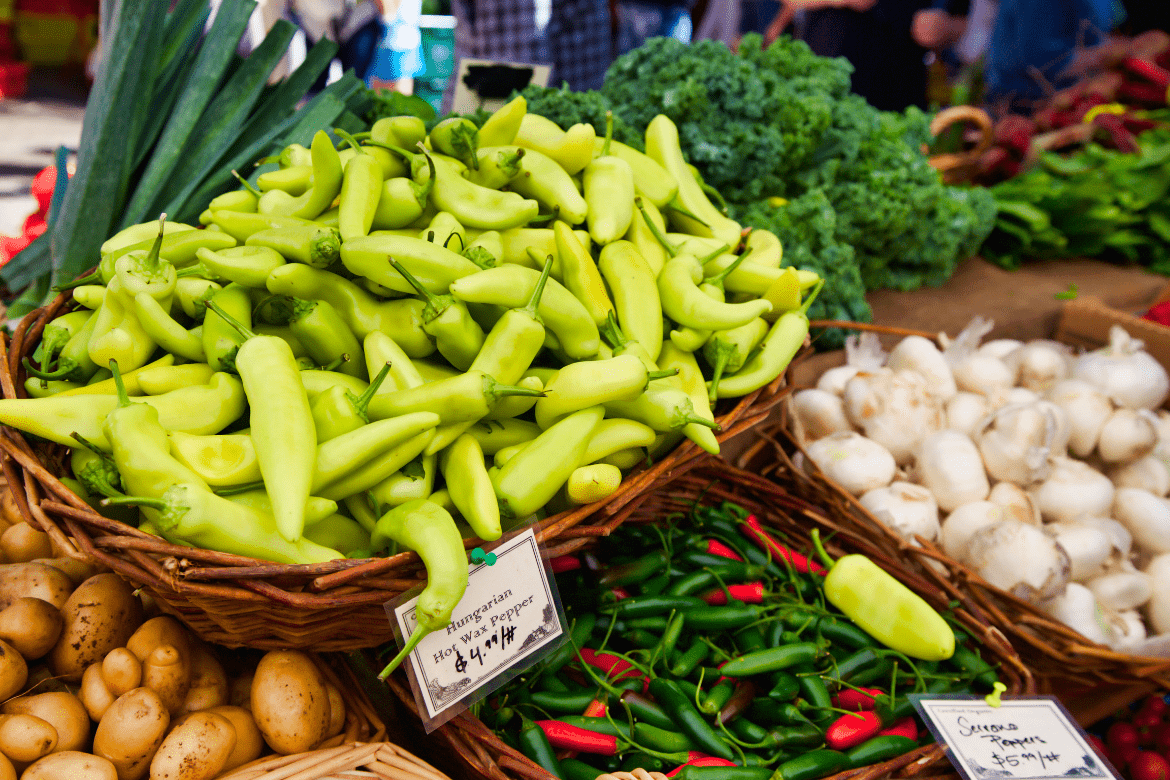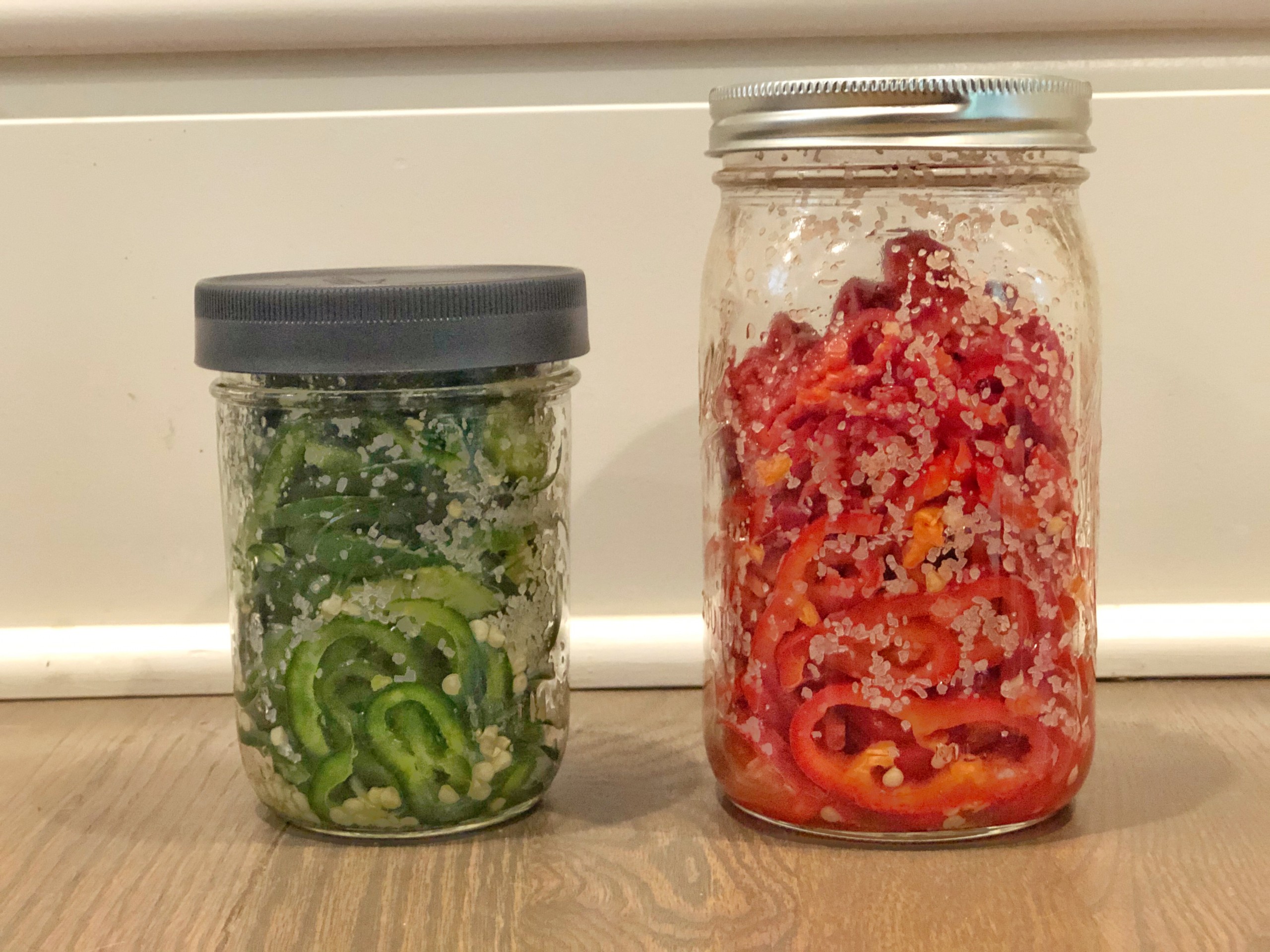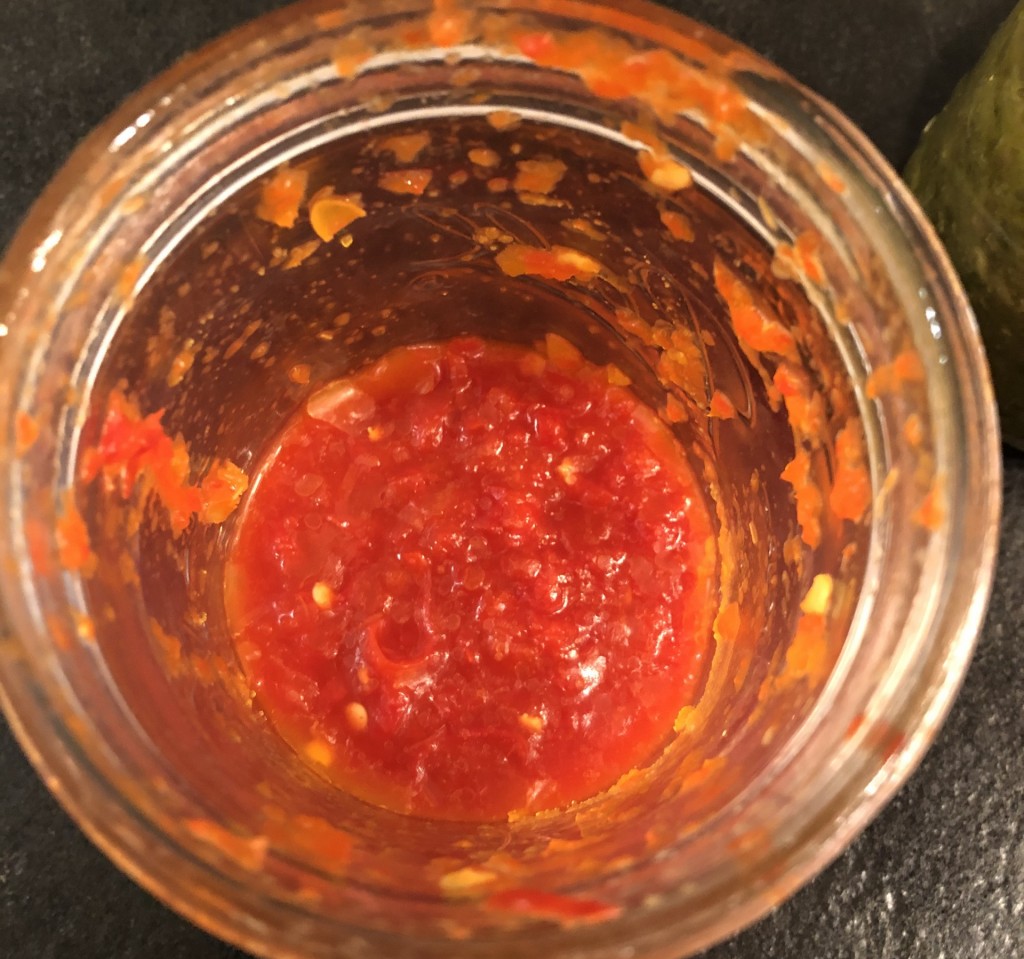If you have extra hot, medium, or mild peppers hanging around your house, I highly recommend making your own shatta.
If you don’t have peppers hanging around your house, I recommend you go find some from your local farmers market or roadside stand and make your own shatta.
However you get the peppers… it’s time to Make Your Own Shatta!

I’ve been obsessed with Falastin: A Cookbook by Sami Tamini and Tara Wigley lately and one of my favorite recipes is this shatta. I highly recommend borrowing it from your local public library so you can test out these amazing recipes for yourself!
Ok, Erin, but what the heck is shatta?
Good question! It’s a fermented condiment that, according to Sami and Tara, “is on every Palestinian table, cutting through rich foods or pepping up others.”
I think it tastes kind of like a salsa (at least we happily put it on our homemade tamales last weekend), but with a deeper, more complex flavor. This might be one of these times that I ask you to trust me and spend the 10 minutes to make it for yourself so you can experience the amazingly indescribable taste. After you have, please come back and try to describe it for others in the comments below!

Plus it’s a fermented food! Fermentation makes foods more nutritious, as well as delicious. Microscopic organisms transform food and extend its usefulness. Not only does fermentation preserve foods… fermented foods help people stay healthy! That’s because fermented foods are rich in probiotic bacteria (the good kind of bacteria!). By consuming fermented foods you are adding beneficial bacteria and enzymes to your overall intestinal flora, increasing the health of your gut microbiome and digestive system and enhancing the immune system. If you want to learn more about fermentation and the health benefits of fermented foods, I recommend reading Wild Fermentation by Sandor Katz or exploring his website wildfermentation.com
All this to say that this condiment will keep in the fridge for 6 months! I’m experimenting with making extra now and freezing it for later. I promise to circle back and tell you how this experiment turned out.
Bottom line, this shatta is:
- a delicious condiment
- that will improve your gut bacteria and overall health
- and is a great way to preserve peppers

I like a medium spice level and my kids are about the same. So far I’ve used hungarian wax, poblano, and jalapeno peppers in the recipe below. Each has a unique and delicious taste, so feel free to use whatever peppers you have on hand (or can easily buy locally) that match your preferred spice level.
My favorite (so far) is the hungarian wax. There’s almost no spice and the flavor makes my toes curl (in the possible best way)!
Recipe
This recipe is adapted only slightly from Falastin: A Cookbook by Sami Tamini and Tara Wigley
(makes about 1.5 cups or 1 pint jar)
Ingredients
9oz hot, medium, or mild peppers (the original recipe calls for red or green chilis); about 8-10 peppers, depending on size
1 Tablespoon salt
3 Tablespoons apple cider vinegar
1 Tablespoon lemon juice
olive oil
Instructions
- Thinly slice the pepper. You’ll end up with thin rings. Discard the stem.
- Place the pepper (with seeds) and salt into a pint size sterilized* jar and mix well
- Seal the jar and store in the fridge for 3 days
- On the third day, drain the peppers, return them to the jar, and blitz with an immersion blender*. You can choose to blitz well if you like a fine paste or roughly blitz so some texture remains; I prefer texture so I stop when there are still small chunks of pepper.
- Add the vinegar and lemon juice. Mix to combine.
- Pour enough olive oil on top to cover.
- Store in your refrigerator for up to 6 months (if it lasts that long! We’ve almost eaten my entire first batch in three weeks..)
- The oil will firm up and separate from the peppers once it’s in the fridge, so just give it a good stir, for everything to combine, before using.
- Enjoy!

Recipe Notes:
- Since this recipe involves fermenting, the jar you use needs to be properly sterilized. I recommend sterilizing your jar in the dishwasher, but you can also use a hot water bath (just like if you were canning, see my previous post if you want more details on how to set up your hot water bath) and boil the jar for 10 minutes.
- You can also use a food processor to chop up your shatta.
Do you have lots and lots of peppers now, at the tail end of the growing season (for those of us in the Northern Hemisphere)?
Whats your favorite way to preserve peppers?
Please share your favorite recipes! And once you’ve made this, please come back and help me describe the flavor in the comments below.

Love me some shatta! I made 2 kinds – one from Cubanelles (mild for me), the other from poblanos (hot for hubby). It was so easy to make and we love the taste. So far we’ve used it as sauce for meatloaf and as a spread on sandwiches. I’m about to try it as a topping on a breakfast omelet. The poblanos weren’t hot enough for hubby but I didn’t want to spend all that time cutting up the tiny little serranoes that he adores on my first effort. Now that I see how quick and easy it is, I’ll try those next time, wearing gloves so I don’t get that capsicum on my hands! The other lesson learned, I used quart jars because it looked like the amount of pepper pieces I had from 9 oz. were too much to fit into a pint jar. But they quickly compressed in a day or so. Next time I will smush them in tighter. Thanks, Erin!
I’m so happy you tried this and I LOVE hearing about your results! Tell me more about cubanelles… did you grow them yourself or buy them from the store/farmers market. I don’t know those peppers at all… I bet the shatta was delicious on your omelet!